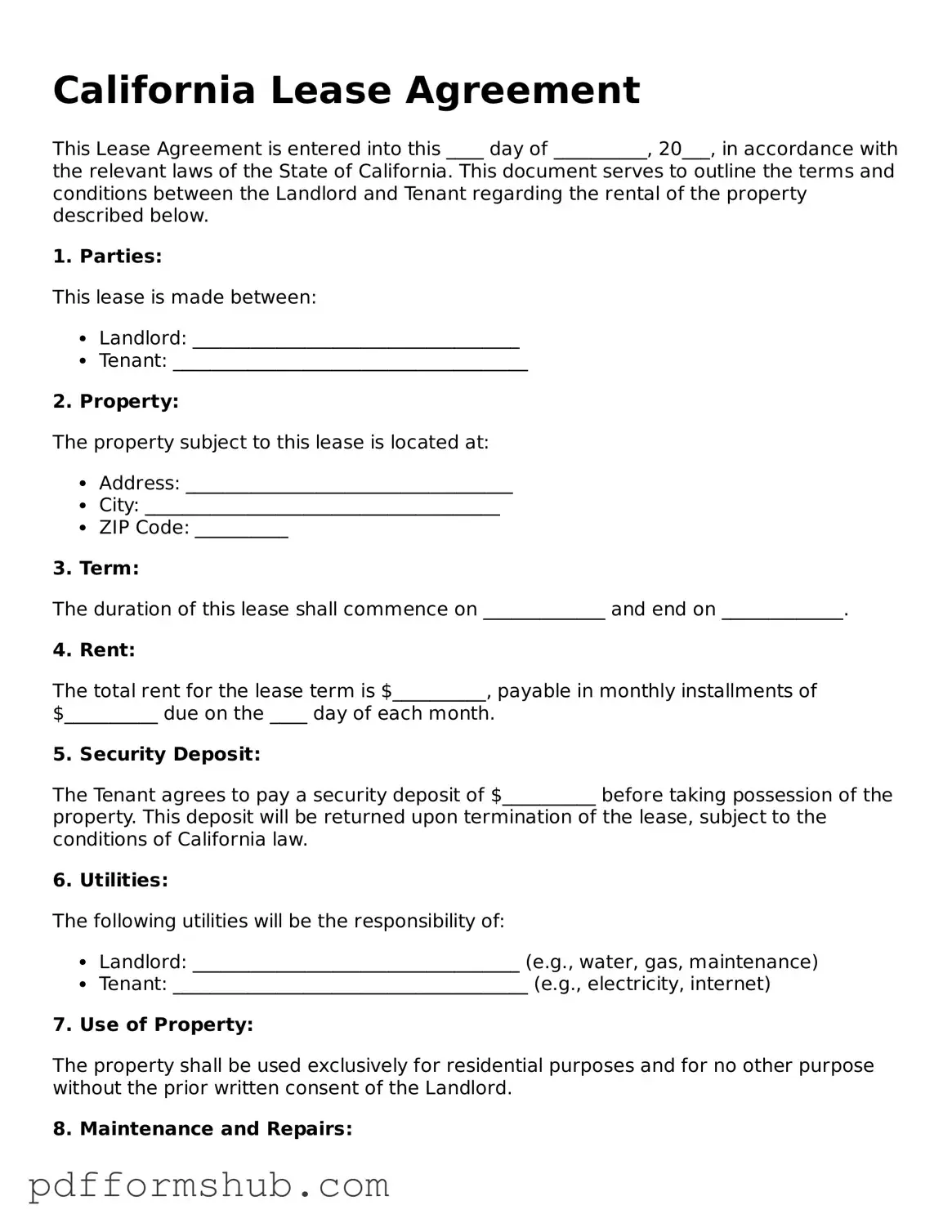Attorney-Verified Lease Agreement Form for California State
The California Lease Agreement form is a legally binding document that outlines the terms and conditions between a landlord and a tenant for renting residential or commercial property. This form serves to protect the rights of both parties while ensuring clear expectations are set. To get started, fill out the form by clicking the button below.
Customize Form
